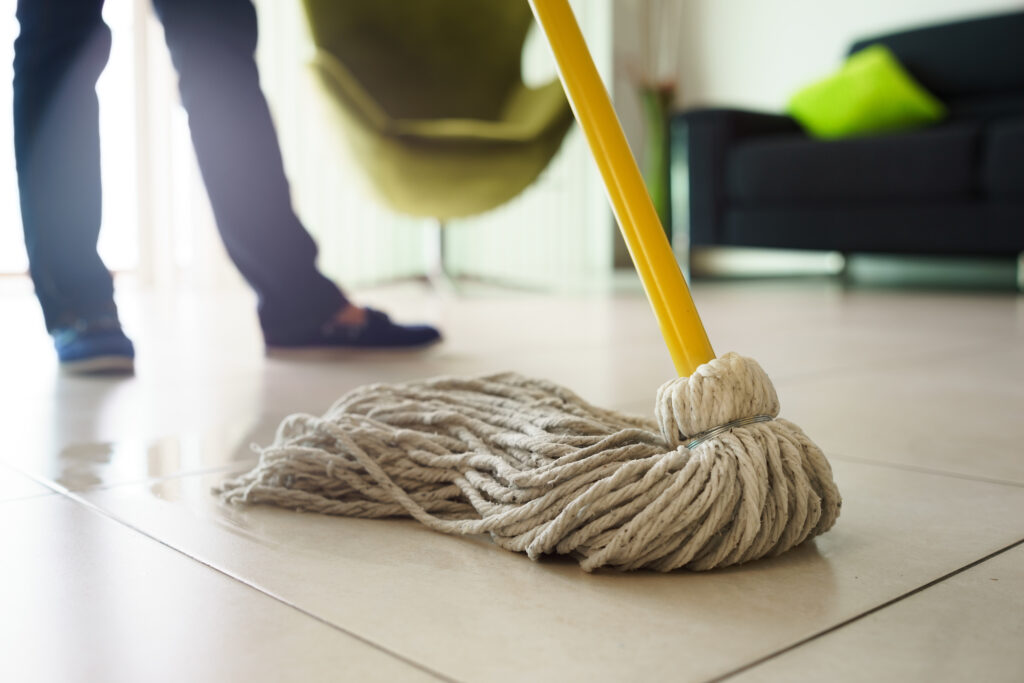The 5 Dirtiest Spots In Your Home

The dirtiest spots in your home may surprise you, but if you clean them regularly, you can turn them into the cleanest rooms in your house. Keeping your home clean creates a more relaxing and enjoyable environment to live in and prevents a lot of illnesses from spreading because there is nowhere for germs to live.
Viruses and bacteria spread by touching something and then touching something else. If you keep surfaces clean, you can prevent the spread of germs and minimize the chances of getting sick in your own home.
Using soap and water to clean is effective, but using a disinfectant cleaner that contains at least 70 percent of isopropanol or 60 percent ethanol is the best way to kill germs.
You can also prevent the spread of bacteria by not letting it into your home in the first place and taking off your shoes before going into your home. Deep clean your home weekly to keep it germ-free and wash your hands frequently for at least 20 to 30 seconds at a time.
The Kitchen
The kitchen is a place where most people spend a lot of their time, and it is one of the dirtiest rooms in the house. One of the culprits happens to be your dishcloth and sponge because they become a breeding ground for dangerous bacteria such as E.coli. and Salmonella. They may even have traces of fecal matter.
The best way to clean your kitchen so that it doesn’t harbor harmful bacteria is to regularly clean high-use areas such as your cutting board, countertops, and kitchen sink. You should also swipe the refrigerator handles often with an antibacterial cleaner.
The Bathroom
This probably isn’t surprising that the bathroom is another one of the 5 dirtiest spots in your home. It is, after all, where we go to handle our business. It is also more humid because using the shower and bath releases moisture into the air. Humidify and warm make for the perfect conditions for germs.
It’s a good idea to wipe down high-use areas every day and to deep clean every week utilizing a bathroom cleaning checklist to prevent the build-up of grime and germs.
The Laundry Room
Ironically, the very room where we clean our clothes can be a germ incubator. Don’t leave washed clothing in the washing machine for longer than 30 minutes before throwing them into the dryer. If you do, you will likely notice a foul-smelling odor when you open up the door because they are likely infected with bacteria. Clean your washing machine drum weekly with a disinfectant cleaner and use a machine cleaner every couple of weeks to keep it smelling fresh.
The Living Room
The living room is also one of the 5 dirtiest spots in your home because it gets a lot of use and has germ magnets such as remotes and game controllers. The living room also tends to get a lot of dirt and dust build-up.
To keep germs and illnesses at bay, it’s a good idea to keep a box of disinfectant wipes handy so that you can wipe down remotes and controllers daily.
To keep dust under control, use a microfiber cloth to wipe down surfaces weekly or more often if you notice it getting bad before then.
Vacuum daily, and don’t forget to get under and between couch cushions where a lot of crumbs can accumulate.
Don’t forget to wipe down light switches and the door handle if your front door leads into the living room. If you have germs on the door handle and then touch items in your home after opening the door, you are transferring germs to more surfaces in your home.
Bedrooms
Your bedroom can also be one of the dirtiest spots in your home and is where a lot of fungus, mites, and bacteria can be found. Hearing this may make it hard to get a good night’s rest, but there is a lot you can do to deep clean your bedroom and keep it free of these unwanted contaminants.
Wash your bedding weekly, and you can eliminate all of not most of the dirt that can cling to your blanket, pillowcases, and sheets. If you suffer from breakouts, eczema, or other skin conditions, this can really help reduce symptoms. You may also want to switch to a chemical-free detergent. If your pillow is washable, throw it in the wash when you wash your bedding weekly.
If you don’t have one already, get a mattress protector that you can slip over your mattress. This will help protect your mattress and prevent dust mites from snacking on your skin cells at night. Be sure to wash it weekly when you wash the rest of your bedding.




